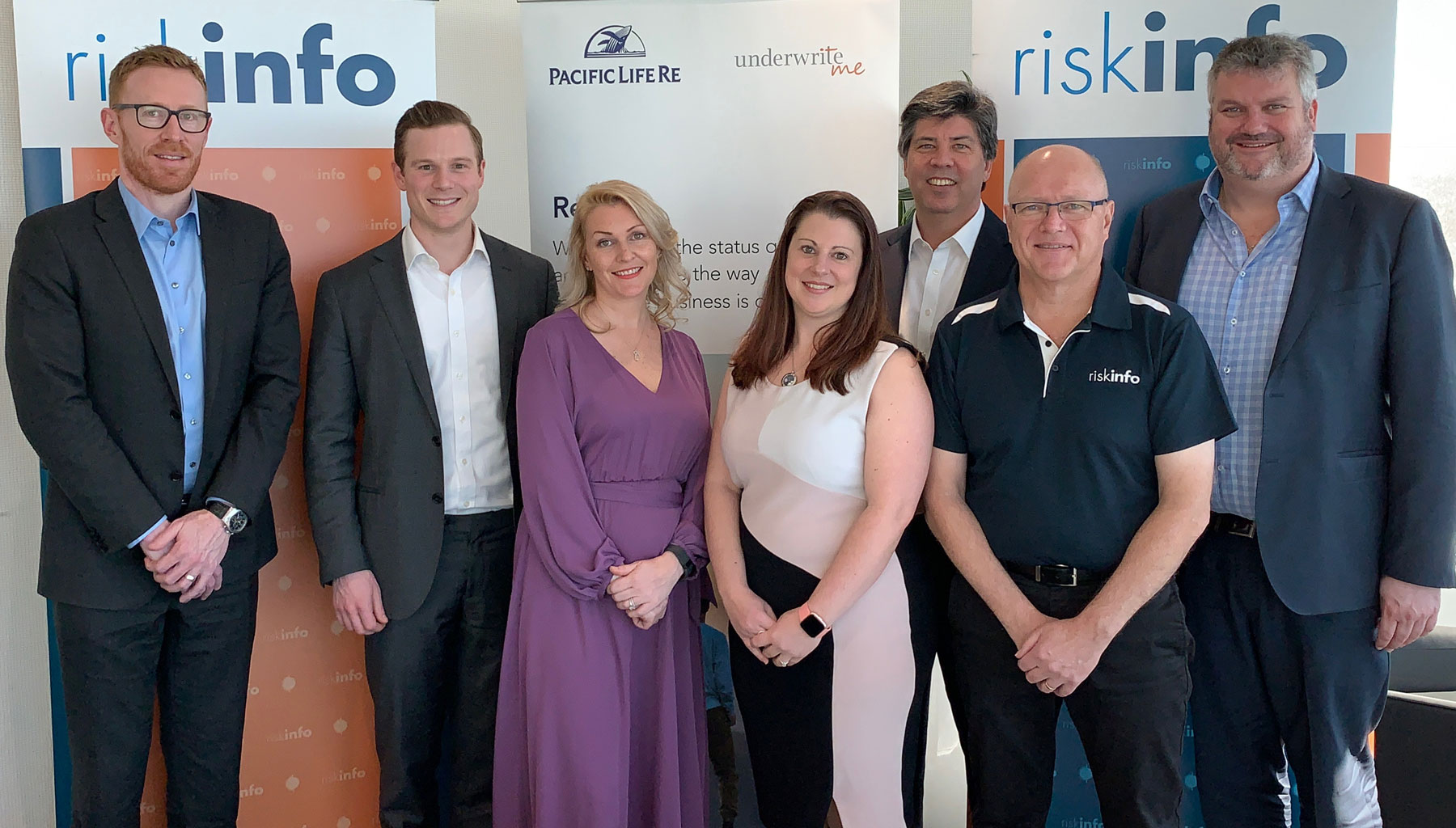In the third of our four-part Round Table series with Pacific Life Re, your peers consider the various life insurance process challenges including the management of in-force and legacy books of business, underwriting efficiencies and transparency issues associated with data sharing and other services such as the claims process…

Panelists
- Pacific Life Re Voices
- Andrew Gill – Managing Director, Pacific Life Re (Asia and Australia), Co-host
- Tyson Johnston – General Manager, Pacific Life Re (Australia)
- Adviser Voices
- Marc Bineham – Adviser, Noall & Co, National President Association of Financial Advisers
- Rob Vitnell – Adviser, Victorian State Manager, Australian Financial Risk Management
- Amie Baker – Adviser, Rekab Advice
- Kathryn Fitch – Adviser, Evalesco Financial Services
Part 3 – Process Issues
New Business Focus Versus Inforce and Legacy Books
The panel agreed process issues impact all areas including underwriting, product and new business technology. But most of the industry, according to Rob, is focussed on improving new business efficiencies and processes. “That’s good,” says Rob, but he added that because his business is as much about managing its existing clients as it as focusing on new business, he’s frustrated about the relative lack of focus on efficiencies, processes and technology upgrades for existing policy holders.
Effective data downloads in their client management systems would be a big-ticket item to improve efficiencies, says Rob, who said AFRM employs two full time staff in its head office just to call insurers and update policy details. Rob said AFRM can extract some data out of some life company management systems but said “Some you can. Some you can’t.”
there have to be greater efficiencies all around from the life companies to help advisers to maintain a viable practice
Rob wants more consistency between the insurers: “All the insurers are different and there’s no real consistency to it. It depends on the CRM and which insurers have which capabilities. So, consistency around data downloads, but also consistency around closed books of business and legacy products.”
On the new business side, Rob added that the compliance regime is getting tougher and advisers are being paid less, “…so it’s tough for advisers out there. They’re being squeezed enormously, so there have to be greater efficiencies all around from the life companies to help advisers to maintain a viable practice.”
Underwriting Processes – PMARs
Marc’s process focus was underwriting, and his message was for insurers to get rid of doctors’ reports, ie Practising Medical Attendants’ Reports. According to Marc, at least 80 percent of the time, insurers have enough information and don’t need PMARs, but they still ask for a PMAR on most occasions, especially for high sums insured.
Marc made the point that once a PMAR is requested, the adviser loses control and has to wait on the doctor to write and submit the report.

In other areas, Marc likes what he sees to be a better, more pro-active approach towards claims processes, where he believes the approach is also far more empathetic in 2019 than it used to be.
He also says one of the great features of some newer product offers is the financial planning fee benefit, which allows advisers to be paid additionally by the insurer to put in extra time and effort for their clients going through the claims process to help reframe their financial future, irrespective of whether it’s a lump sum or income protection claim.’
Marc added that the life insurance companies need to do a far better job of marketing the industry and the high percentage of claims that are paid every year, and that the industry actually does pay claims! He says this is a really big communication problem that industry needs to unite on and address.
the life insurance companies need to do a far better job of marketing the industry
Finally on the list of process efficiency improvements for Marc is addressing the cost of compliance and red tape. He said compliance requirements which cost $1,500 five years ago now cost closer to $3,000 per new client. This, coupled with 100 percent commissions sliding down 60 percent at the beginning of 2020 means the adviser and advice business is being squeezed and that technology needs to be better utilized to reduce the cost of compliance and other costs associated with doing business.
“We’ve got to do better to bring down the cost of doing business,” said Marc.
Kathryn reinforced Rob’s earlier point around costs and difficulties associated with managing existing clients and existing books of business. For example, she praised the tele-interview process as a great service, but then made the point that the tele interviews to which she has access are only for new business cases and aren’t offered to clients wishing to increase or change their existing, inforce insurance cover. “Why?” asks Kathryn. She said it would make a big difference if she could get help with those types of processes and other administration tasks, such as ‘cancel and replace’ processes, switching cover inside and outside of super, or changing policy ownership to accommodate changing client circumstances.

She said better solutions for more efficient endorsement processes for existing policies and smoother, less complicated solutions for those other administration Items would make a huge, positive difference to how she operates.
Amie agreed that so much of the inefficiencies – the friction points in her own business – once again apply to her existing book of clients, rather than to the processes involved in on-boarding new clients. She also agreed with Rob about the inefficiencies and inconsistencies associated with data and data downloads – a massive inefficiency in Amie’s business – (Editor’s comment: TAKE NOTE, LIFE COMPANIES!)
there needs to be much greater transparency between the life company and the adviser during the claims process
Transparency
Amie wants more transparency when it comes to the provision of data and provision of services from insurer to adviser.
This call for greater transparency also applies to the claims process and ensuring the servicing adviser is actually kept in the loop, rather than having a claims officer liaise with a medical professional and fail to update the adviser on progress or status or any issues that may be emerging: “If I’m not involved in that process, I feel as if I’m not doing my job. So, I feel there needs to be much greater transparency between the life company and the adviser during the claims process.
“An email isn’t going to cut it. A letter to my client isn’t going to cut it. I need more information,” she said.
Of the other issues raised, Amie also reinforced the problems she encounters in being required to facilitate the huge number of PMARs, which she agrees are un-necessary in a large proportion of instances where they’re requested by underwriters. She says so much information is already available these days through other sources and through pathology reports. “But to then get a doctor to have to find the time to do a report is a pain in the backside, to be honest,” said Amie.
A summary of the process issues put to insurers and reinsurers by the advisers on our panel included:
- Transparency of claims management
- Claims service quality
- Removing PMARs
- Financial planning support benefits
- Better marketing of claims and advice services
Andrew reflected that one of the consistent messages in the comments from advisers on process improvements related to management of legacy books. Because legacy books are in the past, Andrew said no-one really needs to focus on it. In reality, though, he agreed poor or outdated legacy book administration systems cause all sorts of process and service inefficiencies for both advisers and their clients.
“Because it’s called legacy business, it’s implied it’s something that doesn’t need to be managed, but the opposite is true,” said Andrew.
Tyson offered that, if the reinsurer was able to access more data from product manufacturers , “…there’s a lot more work the reinsurer could do to assist in the cleaner management of inforce and legacy books of business.
“It’s not our role to be the retention team, but we can help life companies with their retention initiatives, by helping to understand the drivers of customer behavior through data analytics.”
Tyson would love to see an industry-wide study on lapse experience, where consistent data was provided by all the retail insurers in order for the whole industry to get a better handle on issues associated with policy lapses and retention processes.
Stay tuned for Part 4 …
